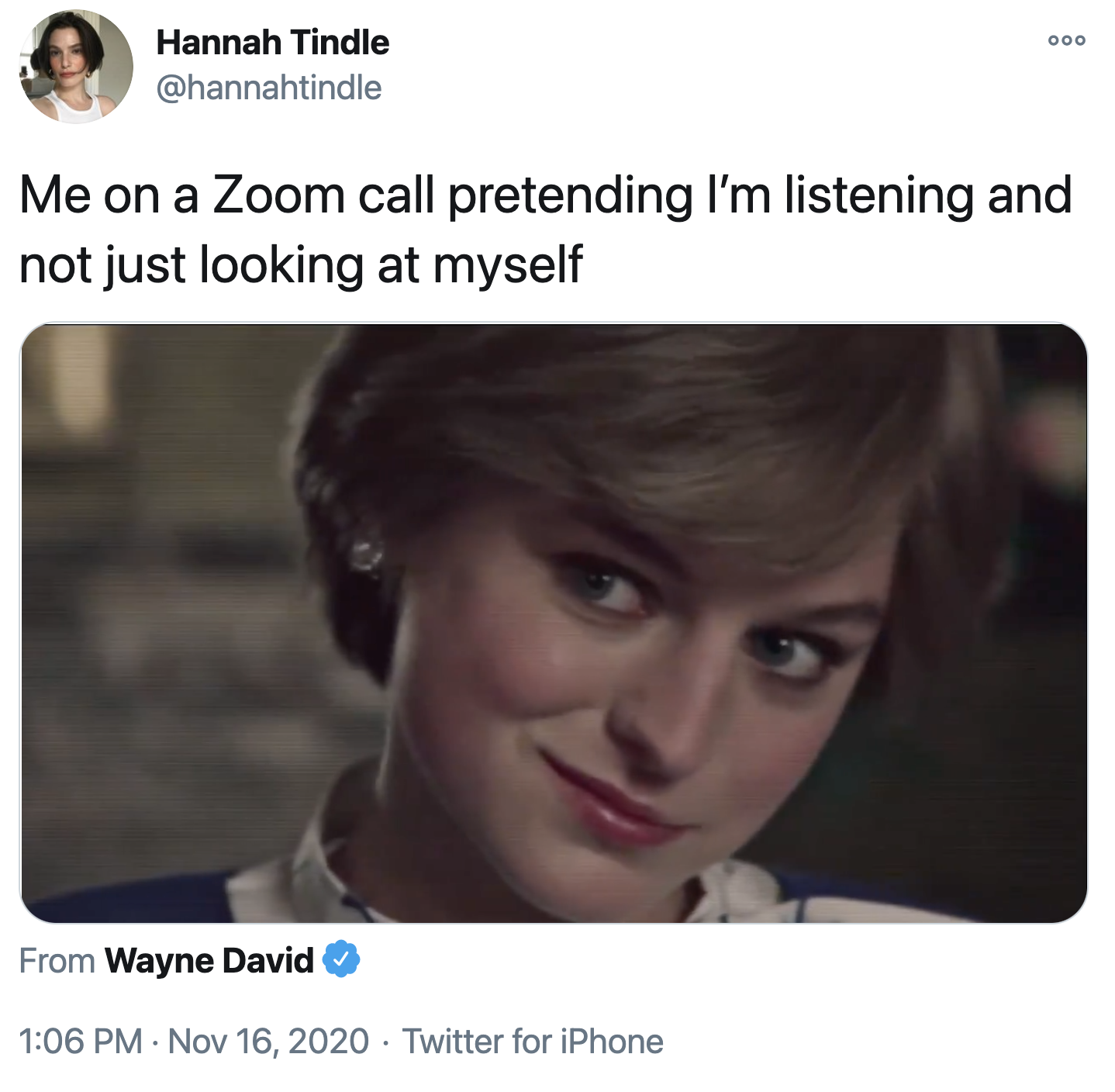sustaining digital closeness
Before COVID-19, no one really knew what Zoom was. Now, Zoom is a verb used in the same way we apply Google (or “Google it”) when we need to find out any piece of information that isn’t top of mind. Zoom’s main offering, video conference calls, is one of many ways the pandemic has shifted the way humans exist and interact in isolation. People were asked to stay indoors to limit the spread of COVID-19, but this is severely detrimental to one of our core human needs: connection. By filling this void during the pandemic, Zoom’s revenue grew 300% and their stock has risen seven-fold. Zoom, and other video conferencing platforms, are now some of the most used platforms that help people maintain vital contact with loved ones and colleagues in this limited pandemic environment.
But, this does come with some mental and physical drawbacks. The phrase “Zoom Fatigue” was coined to express the full body exhaustion people felt after spending so much time staring at their screens navigating a new pervasive form of connection. From delays in internet connections interrupting the flow of conversation, multiple people showing on one screen, the blue light used to illuminate our monitors and more, make video communication exhausting. In The Psychiatric Times, Jena Lee notes, on top of that, there are clear differences in how our brains interpret and process physical interactions versus digital ones:
“...social interactions are very much associated with our reward circuits, as oxytocin—the hormone involved in social bonding—modulates these same dopaminergic pathways involved in reward processing. Moreover, how that social interaction happens seems to matter. For instance, functional MRI data reveal that live face-to-face interactions, compared to viewing recordings, are associated with greater activation in the same brain regions involved in reward (ie, ACC, ventral striatum, amygdala). So, more active social connection is associated with more perceived reward, which in turn affects the very neurological pathways modulating alertness versus fatigue.”
CONNECTION DURING A PANDEMIC
COVID-19 has only accelerated an overall trend toward more digital ways of connecting and working, but we believe that this is unsustainable for the future. Humans need physical connection and community to survive, it is those two qualities that sit at the center of why we are the dominant species on the planet. Humans have an unmatched ability to work together to accomplish a greater goal supported by a deep level of trust that other humans across the world are doing their part in the process. This cooperation and trust is held together by social norms, reputation management, cultures, the rule of law, environment and more.
On top of this, human cooperation and our need for connection is only heightened during times of crisis. Below is an interview with historian, Rutger Bregman, author of the book Human Kind: A Hopeful History where he comments on his belief that humans are actually “pretty decent” at heart. When there is a natural disaster, for example a flood, you will not ask someone about their political affiliations before pulling someone into your boat to safety. Disaster brings our focus toward cooperation and empathy that transcends the slew of differences people may have on the surface.
Coronavirus: Rutger Bregman on human nature and Covid-19, BBC HardTalk
This presents an opportunity for a great reset to forge new and healthier ways of connection between our friends and family + brands and consumers that could shape the way we communicate and interact for many years to come.
This is an excerpt of an article from our current issue. Subscribe to read more on:
Strategies on how to implement more intention, connective and inspiring social media campaigns with examples and concepts to start developing campaigns and initiatives
The psychology on why working from home may be trendy and necessary for the moment and how it will change in the future
Examples and ideas to use the platforms that we rely on for connection and shift there use to inspire, create beauty and facilitate meaningful real life experiences for your consumers




